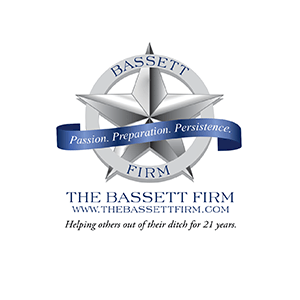Recently, in the case of Gann v. Anheuser-Busch, Inc. and Falls Distributing, no. 08-11-00017-CV, 2012 WL 3026369 (Tex. App.-El Paso July 25, 2012), the El Paso Court of Appeals addressed a Plaintiff’s product liability claim against Anheuser-Busch and Falls Distributing, the manufacturer and distributor, alleging that a long neck beer bottle was a dangerous weapon. Based on their analysis, the Court of Appeals upheld the trial court’s ruling on a Motion for Summary Judgment against the Plaintiff. The Court of Appeals discussed the factors needed to prevail in a product liability case and determined that the Plaintiff did not meet her burden in proving the factors needed.
While celebrating a friend’s birthday at a bar known for its violence, Marty Gann was assaulted by a patron wielding a Budweiser “long neck” glass beer bottle and suffered various lacerations resulting in permanent scarring. Gann filed a lawsuit against Anheuser-Busch and Falls Distributing on theories of liability including (1) strict products liability; (2) negligence; and (3) breach of warranty. The trial court granted both of Defendant’s Motions for Summary Judgment and dismissed Gann’s claims against Anheuser-Busch and Falls Distributing. On appeal, the Eighth District Court of Appeals in El Paso affirmed the granting of the Motions for Summary Judgment.
In a products liability action in which a claimant alleges a design defect, a claimant must prove by a preponderance of the evidence that:
(1) The defect renders the product unreasonably dangerous;
(2) The defect was a producing cause of the personal injury, property damage, or that for which the claimant seeks recovery; and
(3) There was a safer alternative design.
Tex. Civ. Prac. & Rem. Code Ann. § 82.005(a); Timpte Indus., Inc. v. Gish, 286 S.W.3d 306, 311 (Tex. 2009).
In applying the above elements, the Court of Appeals also performed a risk-utility analysis to determine whether the product was defectively designed so as to render it unreasonably dangerous. This analysis required the Court to consider a number of factors including:
(1) Whether utility of the product outweighed the likelihood of injury;
(2) The availability of a safer substitute product;
(3) Whether an alternative safer, simple, and inexpensive design existed; and
(4) The expectations of the ordinary consumer when using the product.
Timpte Indus., Inc., 286 S.W.3d at 311.
The Court of Appeals held that Gann produced no evidence that the risk of injuries from the long neck bottle outweighed its utility and therefore that the bottle was defectively designed so as to render it unreasonably dangerous. Gann also failed to address the majority of factors enumerated in Tempte Indus., Inc. and failed to produce any evidence raising issues of these factors. The Court of Appeals accordingly ruled that the trial court did not err by granting the Motion for Summary Judgment.
It is clear from this ruling that a claimant also needs to identify all the factors noted above and analyze each of the following elements to be successful on his or her claim and prove by a preponderance of the evidence that a product is unreasonably dangerous. In defending such a case, a Defendant needs to determine if the Plaintiff has proven up all the factors they are supposed to. If not, file a Motion for Summary Judgment addressing this issue.
S. Mathew Samuel is an Associate at The Bassett Firm. Mr. Samuel’s practice focuses on Transportation Litigation, Products Liability, Personal Injury, Premises Liability, Toxic Tort, Workers’ Compensation, and Deceptive Trade Practices. He received his B.A. from the University of Texas at Austin in 1996 and his J.D. from St. Mary’s University School of Law in 1999. Mr. Samuel was voted a Texas Super Lawyer in 2010, 2011, and 2012.

